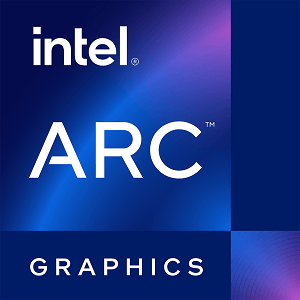NVIDIA GeForce GTX 1650 SUPER vs AMD Radeon RX 5700 XT
We compared two Desktop platform GPUs: 4GB VRAM GeForce GTX 1650 SUPER and 8GB VRAM Radeon RX 5700 XT to see which GPU has better performance in key specifications, benchmark tests, power consumption, etc.
Main Differences
NVIDIA GeForce GTX 1650 SUPER 's Advantages
Lower TDP (100W vs 225W)
AMD Radeon RX 5700 XT 's Advantages
Boost Clock has increased by 10% (1905MHz vs 1725MHz)
More VRAM (8GB vs 4GB)
Larger VRAM bandwidth (448.0GB/s vs 192.0GB/s)
1280 additional rendering cores
Score
Benchmark
FP32 (float)
GeForce GTX 1650 SUPER
4.416 TFLOPS
Radeon RX 5700 XT
+120%
9.754 TFLOPS
3DMark Time Spy
GeForce GTX 1650 SUPER
4694
Radeon RX 5700 XT
+100%
9425
3DMark Time Spy Extreme
GeForce GTX 1650 SUPER
2072
Radeon RX 5700 XT
+113%
4414
Blender
GeForce GTX 1650 SUPER
596
Radeon RX 5700 XT
+88%
1124
Shadow of the Tomb Raider 2160p
GeForce GTX 1650 SUPER
19
Radeon RX 5700 XT
+105%
39
Shadow of the Tomb Raider 1440p
GeForce GTX 1650 SUPER
40
Radeon RX 5700 XT
+85%
74
Shadow of the Tomb Raider 1080p
GeForce GTX 1650 SUPER
64
Radeon RX 5700 XT
+73%
111
Battlefield 5 2160p
GeForce GTX 1650 SUPER
33
Radeon RX 5700 XT
+78%
59
Battlefield 5 1440p
GeForce GTX 1650 SUPER
63
Radeon RX 5700 XT
+79%
113
Battlefield 5 1080p
GeForce GTX 1650 SUPER
82
Radeon RX 5700 XT
+73%
142
GTA 5 2160p
GeForce GTX 1650 SUPER
46
Radeon RX 5700 XT
+41%
65
GTA 5 1440p
GeForce GTX 1650 SUPER
46
Radeon RX 5700 XT
+73%
80
GTA 5 1080p
GeForce GTX 1650 SUPER
142
Radeon RX 5700 XT
+30%
186
Graphics Card
Nov 2019
Release Date
Jul 2019
GeForce 16
Generation
Navi
Desktop
Type
Desktop
PCIe 3.0 x16
Bus Interface
PCIe 4.0 x16
Clock Speeds
1530 MHz
Base Clock
1605 MHz
1725 MHz
Boost Clock
1905 MHz
1500 MHz
Memory Clock
1750 MHz
Memory
4GB
Memory Size
8GB
GDDR6
Memory Type
GDDR6
128bit
Memory Bus
256bit
192.0GB/s
Bandwidth
448.0GB/s
Render Config
-
Compute Units
40
20
SM Count
-
1280
Shading Units
2560
80
TMUs
160
32
ROPs
64
-
-
-
-
-
-
64 KB (per SM)
L1 Cache
-
1024 KB
L2 Cache
4 MB
-
-
-
Theoretical Performance
55.20 GPixel/s
Pixel Rate
121.9 GPixel/s
138.0 GTexel/s
Texture Rate
304.8 GTexel/s
8.832 TFLOPS
FP16 (half)
19.51 TFLOPS
4.416 TFLOPS
FP32 (float)
9.754 TFLOPS
138.0 GFLOPS
FP64 (double)
609.6 GFLOPS
Board Design
100W
TDP
225W
300 W
Suggested PSU
550 W
1x DVI
1x HDMI 2.0
1x DisplayPort 1.4a
Outputs
1x HDMI 2.1
3x DisplayPort 1.4a
1x 6-pin
Power Connectors
1x 6-pin + 1x 8-pin
Graphics Processor
TU116
GPU Name
Navi 10
TU116-250-KA-A1
GPU Variant
Navi 10 XT
(215-0917210)
Turing
Architecture
RDNA 1.0
TSMC
Foundry
TSMC
12 nm
Process Size
7 nm
6.6 billion
Transistors
10.3 billion
284 mm²
Die Size
251 mm²
Graphics Features
12 (12_1)
DirectX
12 (12_1)
4.6
OpenGL
4.6
3.0
OpenCL
2.1
1.3
Vulkan
1.3
7.5
CUDA
-
6.6
Shader Model
6.5




